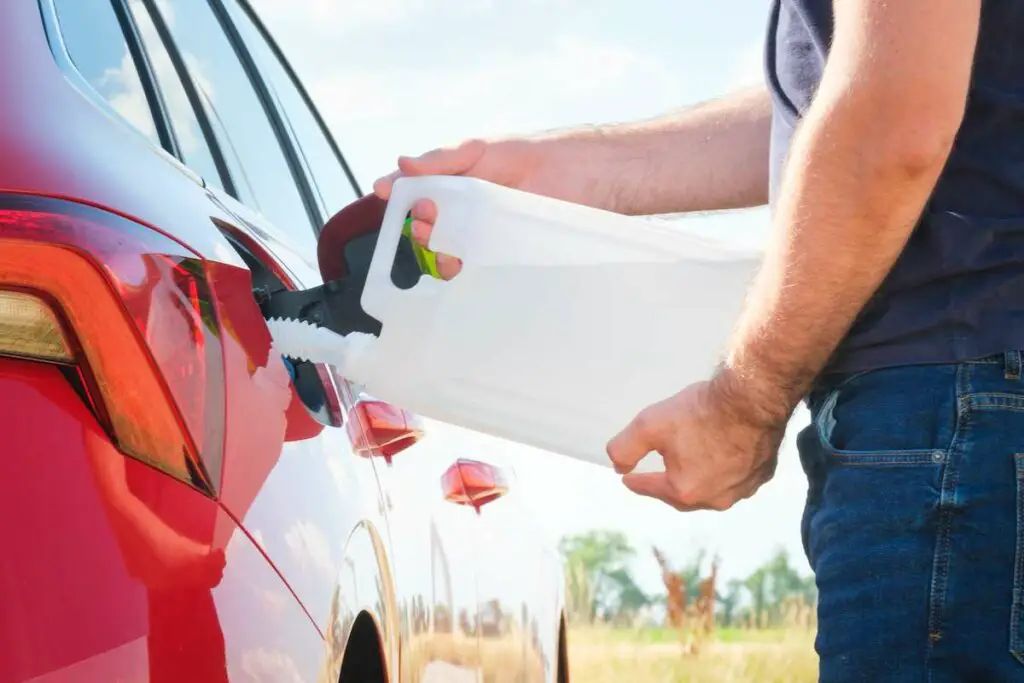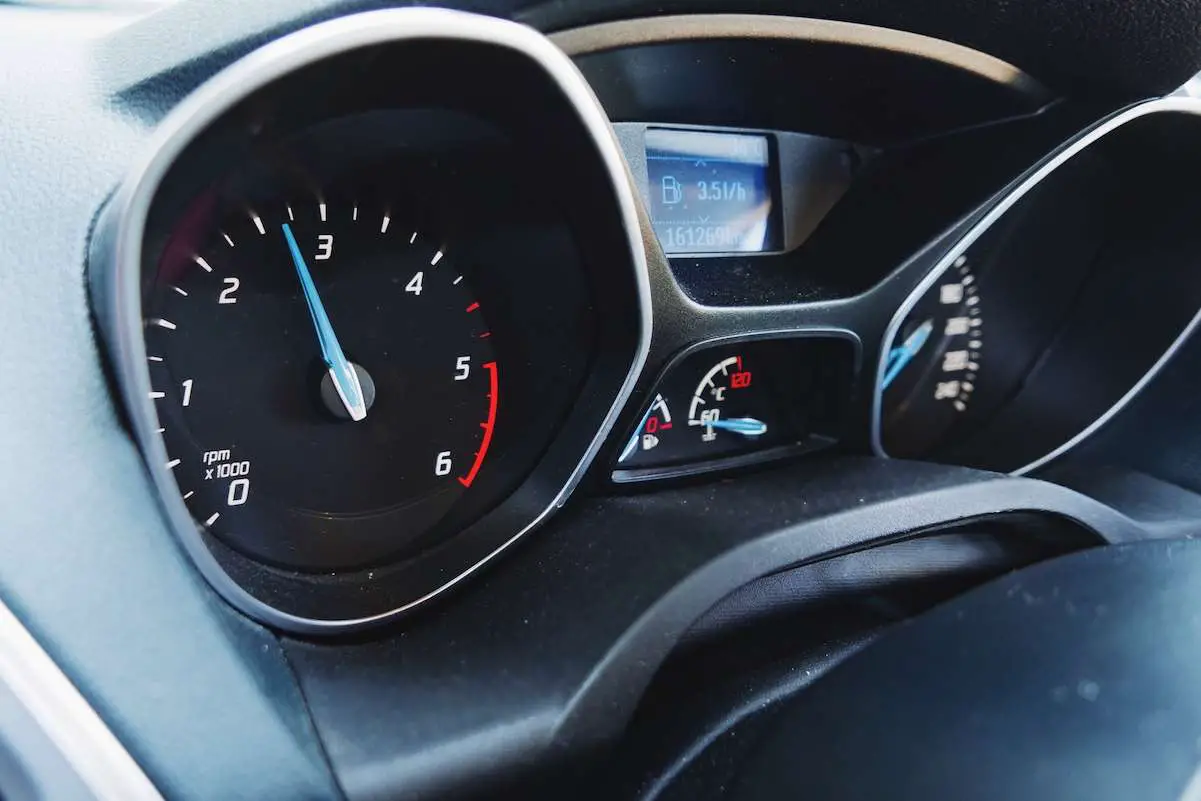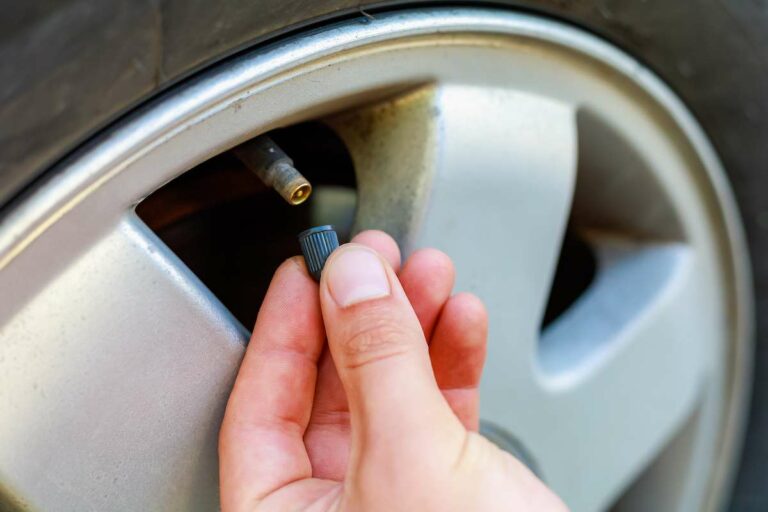Car Won’t Accelerate But RPMs Go Up? Here’s What to do!
It can be quite worrisome if you push the gas pedal and the vehicle doesn’t move. The screaming engine paired with the increasing RPMs should accelerate the vehicle, but it isn’t budging. Whether you want to self-diagnose the problem or you want to save time going to the mechanic, you’re in the right place.
If your car won’t accelerate but the RPMs go up, the parking brake needs to be released, there’s a problem with the transmission, or there’s not enough airflow for optimal combustion. Additional causes include a damaged clutch in a manual transmission, a lack of fuel, and a cracked axle shaft.
Throughout this post, we’ll explain why your car won’t accelerate when the RPMs increase and what you can do to fix and prevent it from happening again.
1. The Parking Brake Is Engaged
If the parking brake is engaged, there’s a good chance you won’t be able to move the vehicle. If it moves, you’ll hear a loud grinding noise.
Furthermore, the acceleration will be quite rocky and difficult. The RPMs go up because the vehicle is getting enough airflow and fuel, but it’s not moving due to the engaged parking brake or transmission brake.
How to Fix
There are two things you should do before worrying about replacing parts and topping off the fluids:
- Disengage the parking brake. If it’s already moved, make sure the handle or pedal isn’t locked. When the parking brake handle gets jammed, it’ll feel like the brake is lifted when it’s not.
- Shift the vehicle into a different gear. If you can go in reverse, you’ll likely be able to shift it into drive after. Unfortunately, this often happens when the transmission is failing. The discs start rusting, making it hard to move the gears.
You might also find that it’s difficult to accelerate uphill when the transmission is going out. Below, you’ll find out two solutions to fix your transmission problems to help you accelerate when the RPMs go up.
2. Not Enough Transmission Fluid
According to Mechanic Assistant, a lack of transmission fluid will prevent the vehicle from moving. The RPMs will climb, but the transmission can’t move the vehicle out of park.
While transmission fluid needs to be replaced regularly, it’s important to look for fluid leaks that could be causing the transmission discs to slip.
How to Fix
Check the transmission fluid levels every few months. If they’re decreasing too quickly, there’s a leak that needs to be fixed. Follow these inspection steps:
- Look for leaks from the hoses going to and from the transmission.
- Check for transmission fluid dripping out of the transmission or the fluid tank.
- Drain, clean, and refill the transmission fluid as directed by the manufacturer (typically every 30,000 to 90,000 miles, depending on the transmission and vehicle make/model).
- If the transmission fluid is brown or gritty, it needs to be replaced (transmission fluid is almost always clear-red or clear-dark pink).
If you neglect the transmission fluid long enough, the discs will slip, corrode, or lock. All of these issues can cause the transmission to fail, leading to significant repair costs.
3. Cracked Axle Shaft
If the axle shaft is cracked, misaligned, or broken, the car’s wheels aren’t going anywhere. The RPMs can go as high as they want, but they won’t move the vehicle.
Rust, corrosion, loose parts, or sudden collisions can crack the axle shaft. You’ll likely notice that it’s hard to accelerate or steer the vehicle long before you can’t move it at all.
How to Fix
Sadly, the only way to fix a cracked axle shaft is to replace it. Once the shaft is broken, the wheels can’t work in tandem, nor can they roll with the engine.
Bring it to the manufacturer’s local repair shop at a dealership or a trusted mechanic for your vehicle’s make and model. A faulty axle repair can cause the vehicle to drift or steer incorrectly.
4. Malfunctioning Transmission
As mentioned in the transmission fluid section, your transmission is required to accelerate the vehicle. The transmission is one of the most expensive and important parts of any vehicle. Check the hoses, discs, hydraulic pump, and torque converter. Transmissions can be quite complex, so we suggest hiring a professional if you haven’t worked on one before.
How to Fix
If your transmission is broken or damaged, it won’t move the discs or pull enough power from the engine.
The discs need to rotate, especially when you’re switching from park to drive or drive to reverse. Slipped discs will grind and overheat the engine while increasing the RPMs. However, you likely won’t be able to move your vehicle.
While many mechanics will replace various parts of the transmission, these parts often fail. When one component of the transmission stops working, it’s only a matter of time before the rest breaks down.
For this reason, most experts recommend replacing the full transmission. You can get a brand-new transmission or a rebuild if enough of the parts are salvageable.
5. Damaged Clutch
If the clutch is damaged, your manual transmission won’t get any torque. Keep in mind that this isn’t doesn’t apply to automatic transmissions.
Your Mechanic claims a slipped clutch is just as bad as a broken clutch in terms of acceleration problems. The RPMs climb because nothing’s wrong with the fuel combustion, but there’s nothing for it to power.
How to Fix
When the clutch breaks, the only thing you can do is replace it. A manual transmission won’t work properly without a clutch.
Take it to the repair shop and ask them to replace the clutch, but don’t forget to find out why it broke. Mishandling a manual transmission can break the clutch long before its time.
For example, switching from reverse to drive without stopping will put immense pressure on the clutch. You’ll also strain and damage the clutch if you don’t switch gears while accelerating to a higher speed. Too many RPMs on a low gear can have adverse effects if you do it for too long.
6. Not Enough Fuel

A lack of fuel will prevent any vehicle from moving, regardless of its transmission. Your vehicle will pull as much fuel from the tank as possible, but if it’s not there, the RPMs will skyrocket without accelerating the vehicle. Never push the gas pedal if this happens.
The last thing you want is to run an engine dry. It can cause overheating and long-term damage.
How to Fix
The good news is that all you have to do is add fuel to your vehicle. The bad news is that you might not have fuel at your house or wherever you’re stranded. You’ll also need to replace the gas gauge if it says your vehicle has gas when it doesn’t.
The No-Spill 2.5-Gallon Gas Can is a top choice for anyone who wants to make sure they never run out of fuel.
Two and a half gallons of gasoline is more than enough for any car to get back on the road. The no-spill lid ensures you won’t waste any fuel in the process. You’ll also enjoy the easy dispensing button. This lightweight, durable gas can is a good fit for anyone who drives.
7. Fuel Combustion Problems
Fuel combustion requires oxygen and gasoline. If there’s not enough of either ingredient, the controlled explosion can’t propel the vehicle.
The RPMs can hike, but that doesn’t mean your car will go anywhere. Broken combustion chambers, pistons, and other parts will hinder the combustion process. There’s a high chance of your car getting too hot as well.
How to Fix
If the fuel combustion chamber is damaged, it’s best to bring it to a mechanic. The air filter directly influences the combustion chamber, so we’ll explain how you can replace it in the following section.
You also might need to replace the fuel tank. If there’s a leak, it’ll bring too much oxygen or not enough fuel into the combustion chamber. An excess of either component will inevitably mess with your vehicle’s acceleration.
8. Poor Airflow
In one of my other articles, I’ve explained how a dirty air filter is enough to ruin a vehicle’s airflow. Without adequate airflow, not only can the vehicle overheat, but the combustion chamber won’t get enough oxygen for the fuel-to-oxygen ratio.
Removing debris from the grille can also improve your vehicle’s airflow, though it’s unlikely to affect its ability to accelerate.
How to Fix
Here’s the simple step-by-step process of fixing your car’s air filter:
- Pop the car’s hood and locate the air filter box. It should have a couple of retaining screws that need to be removed.
- Lift the old air filter out of the vehicle. Get a like-for-like air filter (never put the filter back into the vehicle if it’s torn).
- Clean the filter housing to remove excess debris. If you don’t, you’ll risk clogging the new filter.
- Place the new filter in the filter housing. Seal the box with the same screws or retaining brackets you removed.
Note: Ensure the proper side is facing up. There should be a rubber gasket that goes upward.


![Why Are Cars Called Whips? [Here’s the Truth!]](https://vehicleuniversity.com/wp-content/uploads/2023/01/car-drifting-2021-08-29-13-38-47-utc-768x576.webp)
![Car AC Takes A While To Get Cold? [Here’s Why & What To Do!]](https://vehicleuniversity.com/wp-content/uploads/2023/01/girl-driver-has-problem-with-non-working-condition-2022-11-15-04-07-21-utc-768x512.jpeg)
![How Many Amps is a Car Battery? [Complete Guide!]](https://vehicleuniversity.com/wp-content/uploads/2023/01/Depositphotos_6733694_XL-768x576.webp)
![Why Do Deer Run Into Cars? [With Tips to Avoid Them!]](https://vehicleuniversity.com/wp-content/uploads/2023/01/reindeers-crossing-a-road-in-autumn-season-in-finl-2021-08-26-16-01-26-utc-768x576.webp)

![Car AC Cold Only When Driving? [Here’s Why And How to Fix!]](https://vehicleuniversity.com/wp-content/uploads/2023/01/exhausted-young-woman-suffer-from-heat-inside-car-2022-08-01-04-58-09-utc-768x576.webp)
